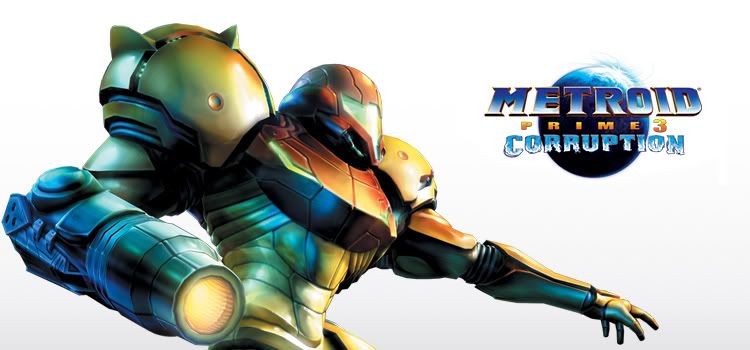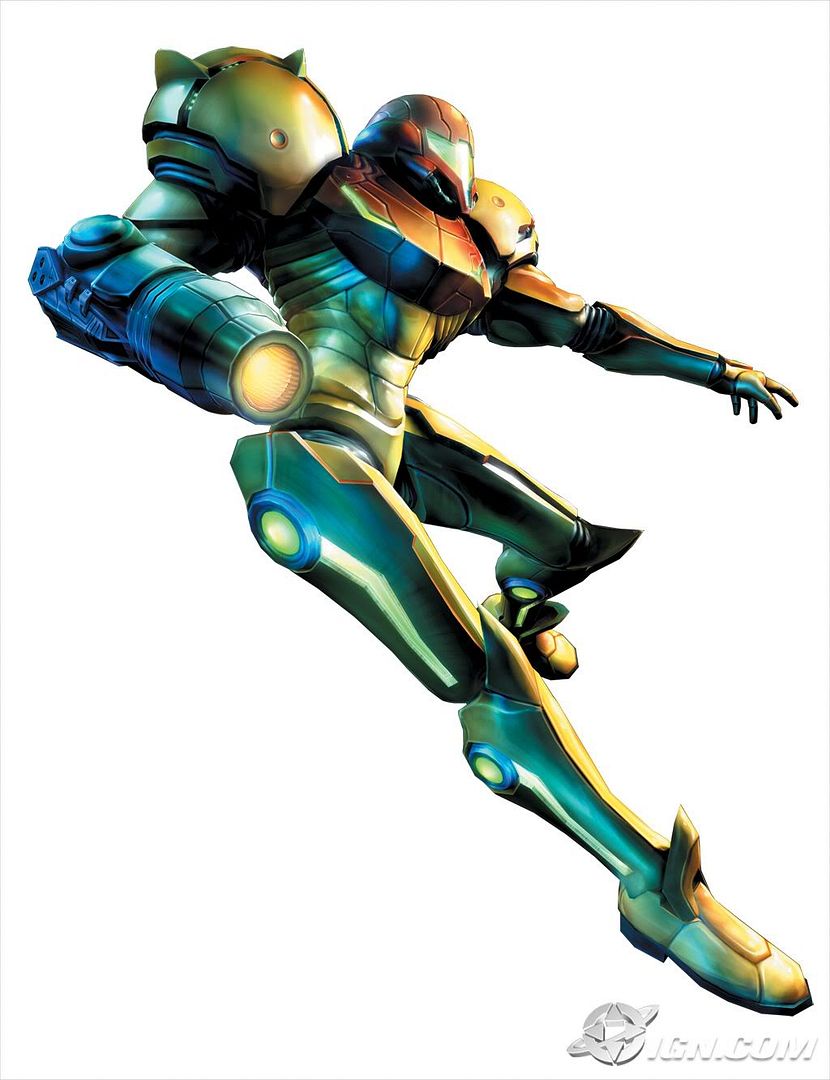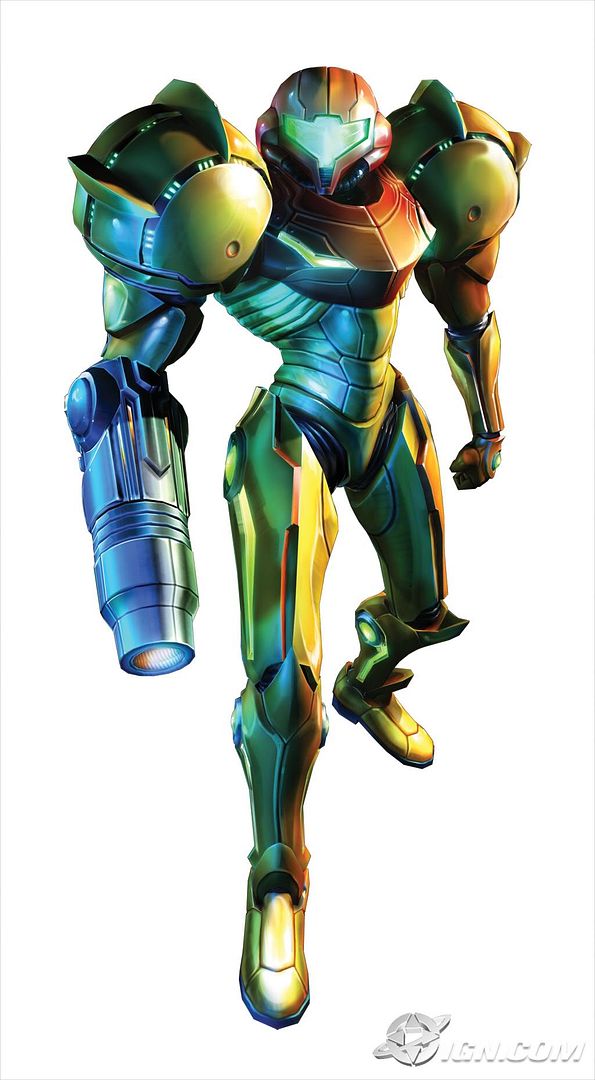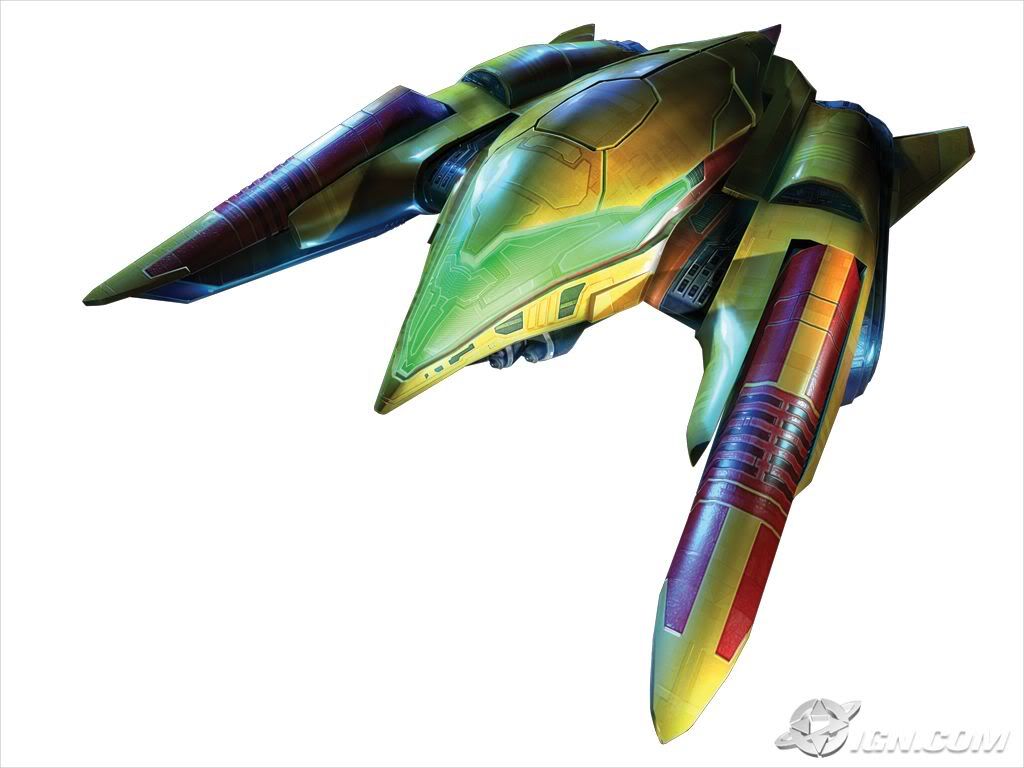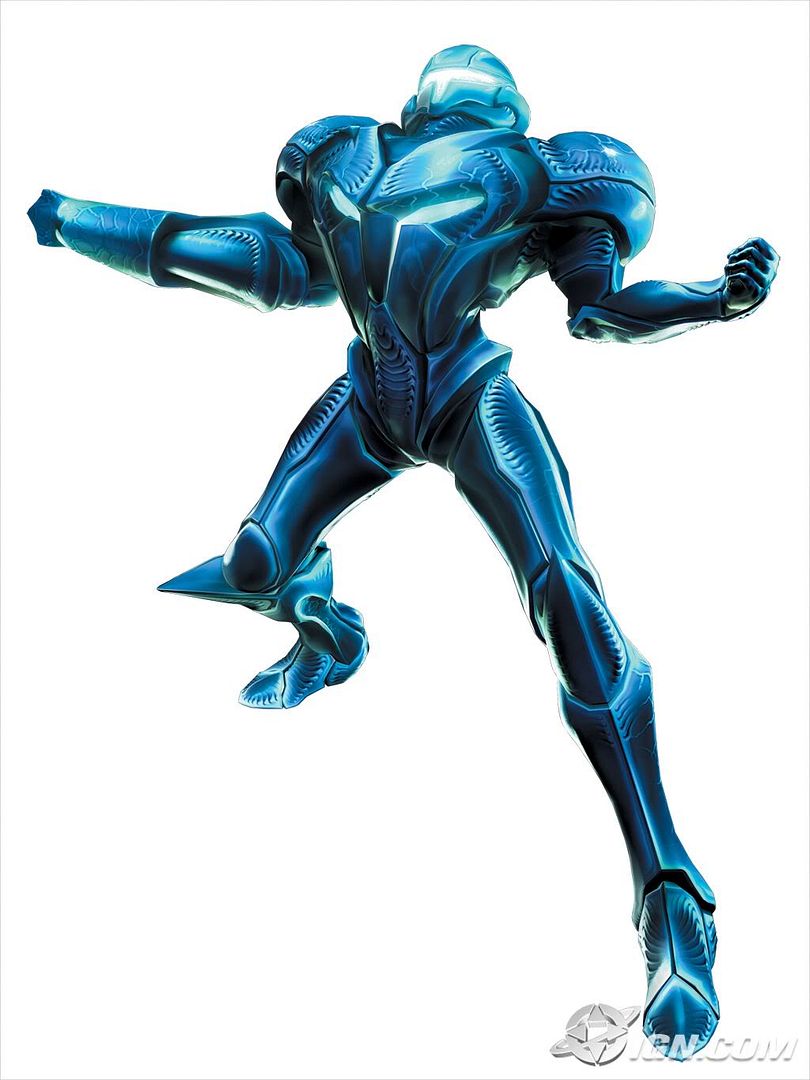I am enthralled with Nintendo's Metroid series. Always have been and probably always will be. So when the Big N ushered me into a private room inside its sprawling E3 2006 booth to play a demo of Metroid Prime 3: Corruption (yes, that's it's official name), I felt all tingly and decidedly giddy. I have ever since the original Metroid Prime publicly put Retro Studios on a pedestal beyond the reach of most other developers and I'm not going to lie: I fully expected Prime 3 to up the ante. At this point in time, it's a pretty well documented fact that Nintendo's Wii console is less powerful than its competitors, but I've always felt that if any studio could push the system to the best of its abilities, Retro could. So as I stepped into Nintendo's dark, curtain-enclosed demo room to play the title for the first time, all of these thoughts and more floated through my mind. And yet, they were squashed by the relentlessly nagging question: surely the game would look good, but would it play great, too? Would it be able to prove that Nintendo's new controller was and is the necessary evolution in videogame interactivity?
I have to be honest. After playing the game for roughly 10 minutes, I find that I'm simply unable to answer those questions. I don't want to scare you. I don't mean to suggest that my experience with Prime 3 was uneventful - it wasn't. But neither was it perfect. At the same time, I didn't want to stop playing and ever since I was practically dragged away from the controller and Aran's latest adventure I've thought consistently about my triumphant return. Clearly, the game is doing something right.
Metroid Prime 3 opens with some dark and moody music and an animated title screen that reminds me more of the stylized menu from the original game than it does the sequel. Before I could ascertain any would-be story elements, the Nintendo people on-hand to demo the title quickly jumped into the single-player offering The game runs in both progressive scan and 16x9 widescreen modes and I noticed a Dolby Pro Logic II startup screen, which suggests that Dolby Digital is probably a no-go for the system; after all, if it was in, Retro'd be utilizing it.
My time with the single-player game was brief and left me craving much more. The title begins as Samus Aran lands her trademark gunship on what looks to be a new planet. She weaves through alien architecture - Retro has added a motion filter to accentuate the speed of the craft in these game engine cut-scenes - and finally sets down upon the ground. Aran ejects from her ship and that's when you take control.
You have two immediate control options. One is designed for people unfamiliar with traditional mouse-and-keyboard first-person shooters and the other, advanced, is for the rest of us. It works exactly as you're probably imagining it might: you move the heroine around with the nunchuck attachment's analog stick and you aim with the Wii-mote, as I'll be dubbing the pointer often in future articles. On paper, this sounds amazingly intuitive, but for now you're just going to have to trust me when I write that you'll very likely need to practice and become familiar with the new setup.
The Wii-mote offers up the potential for a new degree of precision aim, but it's not as though you pick it up and the sun shines down from the clouds as a chorus of angels sing. The sensitivity on the Wii-mote is so pixel perfect and so completely sensitive that it can be jarring. A very minimal flick of the wrist can send your on-screen reticule whizzing from the bottom-right corner of your screen to the top-left and so you have to be careful and conscious of the way you play and move.
Think about the first time you used a dual-analog configuration for a first-person shooter. If you grew up with GoldenEye or even Turok, I bet you had some trouble adjusting to using two sticks instead of one. Now imagine going from dual-analog to 3D space. There's an adjustment process. Really.
I found myself getting it. Starting to learn the intricacies. And the more I picked up, the more I excited I became. I field a lot of questions about how you can turn around and come back to center in a game like Metroid Prime 3. It's actually pretty intuitive. You simply point the Wii-mote in the direction you want Samus to turn and at a certain point she goes from aiming to turning. It's as though there is an invisible square that separates the two. If you're simply aiming near center, Aran will remain straight on. But the moment your reticule drifts beyond the invisible box and into the right or left fields, the character starts turning. To center again, all you need do is return the reticule to the invisible box and you're golden. If it's sound weird, it's not. The fact that most people who play the game never even question how it works is a testament to this fact.
The Wii-mote's responsiveness enables gameplay situations simply not possible with dual-analog sticks - even with their sensitivity turned all the way up. Once I figured out what to do - how to hold the remote and how much pressure to apply for aiming and turning - I was able to run through the game's environments with considerably less trouble and occasionally I found myself kicking a little ***. You can manually aim or alternatively auto target with the press of a button, and I employed both methods to obliterate foes. It was during these situations that I transitioned from being engaged to being hooked. When you're on your game, pointing the Wii-mote at multiple enemies can be a breeze and it's an extremely intuitive and rewarding experience. Retro seems to understand this because as a whole Prime 3 features more combatants than ever before and the artificial intelligence of these characters has been vastly ramped up.
Retro is using the nunchuck's accelerometer in an interesting, surprisingly non-gimmicky way. It controls Aran's grappling beam. You simply gesture flick the unit forward and the heroine's beam springs outward. The beam is used offensively, too, which is a pleasing addition, to say the least. Some Space Pirates come fully equipped with shields that they stubbornly refuse to part with, and therefore you have to figure out a way to disarm them. The grappling beam does the trick. Flick gesture the nunchuck unit toward one of these creatures and her beam will blast toward them and grip their shield. Then, all you need do is press backward on the nunchuck unit's analog stick and you'll literally rip the shield away, exposing the Space Pirate. This process is all the more intuitive because it can be done completely separate from the aiming process - once you've mastered it, you'll notice yourself blasting at enemies as you tear shields off others.
The Wii-mote is likewise used in clever ways. The world in Prime 3 is of course littered with trademark doorways, many of which open when blasted. Some, however, don't - and you'll need to try a little harder to get past them. In a couple instances, I needed to use the Wii-mote to act as Aran's right arm. When I approached a doorway, I noticed a groove in a wall and learned that I could gesture forward with the Wii-mote to make Samus punch her arm into the groove. Then, I had to turn the remote as though it were a key in a lock, at which point Aran's arm did the same. Eventually, I needed to pull backward again, and here Samus grabbed hold of a level inside the door and - you guessed it - pulled it open, unlocking the contraption. The process was really well implemented and clever.
Some notes on the other controls. You do not, as previously suspected, make a stabbing motion with either controller to trigger the morphball. You simply press a button on the nunchuck and she drops. Neither do you control the morphball with the Wii-mote. It's done with the nunchuck's analog stick. Weapons are selected with the D-Pad on the Wii-remote and Samus shoots her blasters whenever you hit the A button. It all seems to work perfectly fine.
Despite some genuine trial and error, the majority of my short time with Prime 3 was enjoyable. However, it wasn't without hiccups. This was the biggest. You use the Wii-mote's underbelly B-trigger for jumping in the game. Tap it twice and you'll double-jump, and this function was in the demo. Maybe I was getting cocky, or maybe I've played too many PC FPSs, but I really wanted to double-jump and bust out a 180-turn mid-air, which, based on the controller's capabilities, should be a breeze. But I ran into an issue when I tried it. The Wii-mote didn't react to my quick turn - it just sort of ignored the input as though I never applied it. That worried me, so I tried again and disappointingly got the same results. Confused, I gave up and tried to turn slowly again, at which point the device responded and I was on my way again. Thing is, I didn't have enough time with the demo to discover definitively if this was a user error - maybe I was holding the controller wrong or perhaps I had moved too far away from the sensors - or if it's something that needs to be ironed out with the controller or the game. I'm hoping to figure that out before E3 2006 draws to a close.
As far as the visuals go, Prime 3 looks very similar to its predecessors. It is not so visually made-over that it's unrecognizable. Rather, it looks a little cleaner, a little sharper, the models are perhaps more detailed and the environments are unquestionably bigger. I'm used to Prime corridors being cramped and windy, but as I made my way through one in Prime 3, I noticed that it had vaulted ceilings that stretched hundreds of feet upward. It looked great. In another area, lava and fire illuminated a room with bloom effects right out of Ico. Lighting and particle effects have seen dramatic improvements so that environments are more believably hued and lit and particles are far more frequent. Gunfire streams about rooms and enemies explode in sparks of color and light. The game's fluidity strives for 60 frames per second but occasionally drops below the mark - usually because there are more enemies on-screen than ever before - dozens of Space Pirates at a time in some cases.
The fastest 10 minutes of my life were spent playing Metroid Prime 3: Corruption. When it was all over, I was reluctant t leave. The Nintendo people handling the demo first informed me that my time was up. I continued playing. They then asked me to finish up. I kept playing. Finally, they told me that I had to end the session and I begrudgingly agreed to accommodate their demands. It's a shame because I left the demo really liking some parts of Prime 3 and totally unsure about other portions. If I could have only had another half hour, or perhaps six hours, with the game, everything would surely be clear.
Which brings me back to my original points. I think that I could really love Metroid Prime 3 if some of the control kinks I encountered are worked out and I have every confidence that it'll happen. But for now, I need to remain level-headed and while my heart wants me to jump in and declare the game brilliant, my mind won't let me forget those few times when the controller stopped responding to my movements. Rest assured I'll have more impressions from the E3 show floor. Until then I'll remain cautiously optimistic and excited about the gameplay sessions to come.
